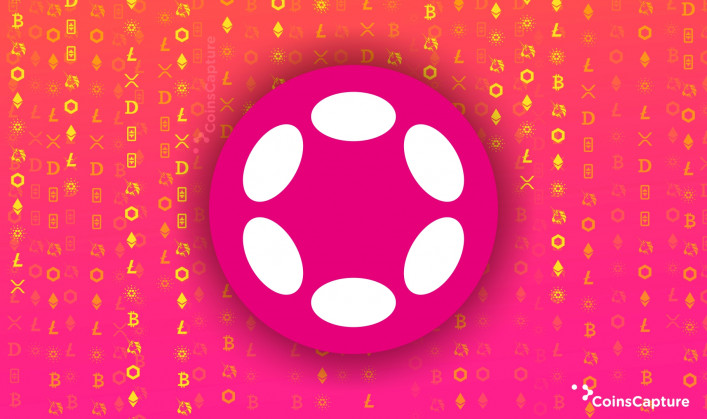7 November 2025
What Is A Polkadot?
Polkadot is a blockchain interoperability protocol that facilitates the transfer of money and information across distributed ledgers like Bitcoin as well as Ethereum. This was developed with speed and scalability in mind, too. The DOT currency could be purchased and traded on Coinbase as well as other exchanges. It could be utilized for staking and in the administration of the network. Polkadot, like several Cryptocurrencies developed after Bitcoin, combines the characteristics of a currency traded on a decentralized platform. With the Polkadot protocol, two blockchains that aren't otherwise connected may have a safe two-way conversation, allowing, for example, money or information to travel between the Ethereum as well as Bitcoin blockchains directly. It is built to be fast and expandable by using several parallel blockchains or "parachains" to offload the primary blockchain from most of the processing capacity.
Also Read: What Is Kusama?
What Makes Polkadot Unique?
Polkadot can handle multiple transactions simultaneously on multiple chains since it is a distributed multi-chain network. The increased adaptability is a direct result of the parallel processing capacity. The substrate is a structure that makes creating a blockchain for a specific use case both fast as well as simple, so it makes it simple to link that blockchain to Polkadot's system. The network's adaptability and flexibility also make it ideal for data and activity to be shared across users. To add new functionality or fix issues, Polkadot may be updated automatically without requiring a fork. Every coin holders have such a voice in network administration through a comprehensive user-driven management structure. Organizations using Polkadot may tailor the administration of their blockchain to meet their own requirements and adapt to changing circumstances. Each role-nominators, verifiers, as well as collators—plays an important role in ensuring the health of the system and preventing malicious activity. Polkadot completed its first Parachain bids at the year's conclusion in 2021. All of the Parachain auctions used a permissionless lighting system. If a bid concludes at a random time, the highest bidder wins. For the first 5 spots, Polkadot selected the best bidding champions: Acala, Moonbeam, Astar, Parallel, as well as Clover. The DOT bids pledged as security will lock in the para chain spots for these initiatives for a period of 96 weeks. All initiatives on Polkadot have been extensively examined on its own testnet Kusama.
Also Read: What Is Kadena?
How Does Polkadot Work?
Polkadot is able to analyze this massive amount of data since the primary relay chain relies heavily on its numerous supporting parachains. Because of this, the Polkadot platform will handle over a thousand TPS, whereas Bitcoin and Ethereum will handle only roughly seven and thirty respectively. The infrastructure specialists at Bison Trails explain that "The relay chain is responsible for ensuring consensus as well as transaction transit across parachains, so that as the network expands, the pace of Polkadot might increase, perhaps reaching a million TPS". Within the Polkadot network, Parachains serve as blockchains tailored to certain use cases. Every para chain is indeed a fully-functional blockchain from its own rules as well as capabilities.
How Many Polkadot Tokens Are There In Circulation?
After only a vote on Polkadot, the platform redenominated its currency, increasing the value of a DOT by 100 such that each old DOT became equal to 100 fresh DOT. Therefore, in August of 2020, the maximum supply of old DOT coins will have increased from 10 million to 1 billion. Avoiding the need for those pesky little decimals and making calculations simpler were the driving forces behind the redenomination. Though all balances were multiplied by 100, this had no bearing on who got what share of DOT or how much each holder got. The very maiden Polkadot ICO took place in October 2017 with a value of $0.29 per token as well as a supply of 2.24 million. Polkadots were sold for $1.25 each at the second ICO in July of 2020, with a total of 342,080 DOT coins being distributed.
How Does Staking Work On Polkadot?
In contrast to Bitcoin's PoS approach, Polkadot relies on a consensus process based on PoS to ensure the safety of the network, confirm transactions, as well as issue and distribute additional DOT. Depending on their level of interest, technology expertise, as well as financial resources, DOT holders may engage the staking system in a number of different methods.
How Is The Polkadot Network Secured?
Validators as well as nominators make up the network's NPS process. Coins held by nominators are used to support verifiers. Such staked coins improve the safety of the blockchain by rendering malicious actions very costly. Validators stake upon that Relay Chain to verify transactions from the various parachains. Through this one-of-a-kind authenticity method, chains may safely communicate with one another while yet maintaining their autonomy.
Who Created Polkadot?
Co-creator of Ethereum and Polkadot programmer Gavin Wood is also a programmer on the project. Around May 26, 2020, it was released. Polkadot's open-source code is mostly maintained by the charity Web3 Association, which does a related study.
Where Can You Buy Polkadot?
Binance, Huobi Global, OKEx, Coinbase, KuCoin, and others are among the best places to buy and sell Polkadot (DOT) right now. Polkadot's marketplaces section on CoinMarketCap includes listings for more Cryptocurrencies. Bitcoin as well as Ethereum, among others, may now be purchased using a credit card and just fiat money of your choosing. Polkadot's Cryptocurrency section on CoinMarketCap has a built-in conversion tool so that you can see its value in your preferred fiat money in real-time.
The Bottomline
There are several upsides for all parties involved in the Cryptocurrency community thanks to the Polkadot platform. Polkadot additionally delivers among the most profitable consumer rewards in the Cryptocurrency industry in recent history with yearly profits of 10% on aggregate from staking DOT coins.
Disclaimer: The author’s thoughts and comments are solely for educational reasons and informative purposes only. They do not represent financial, investment, or other advice.






